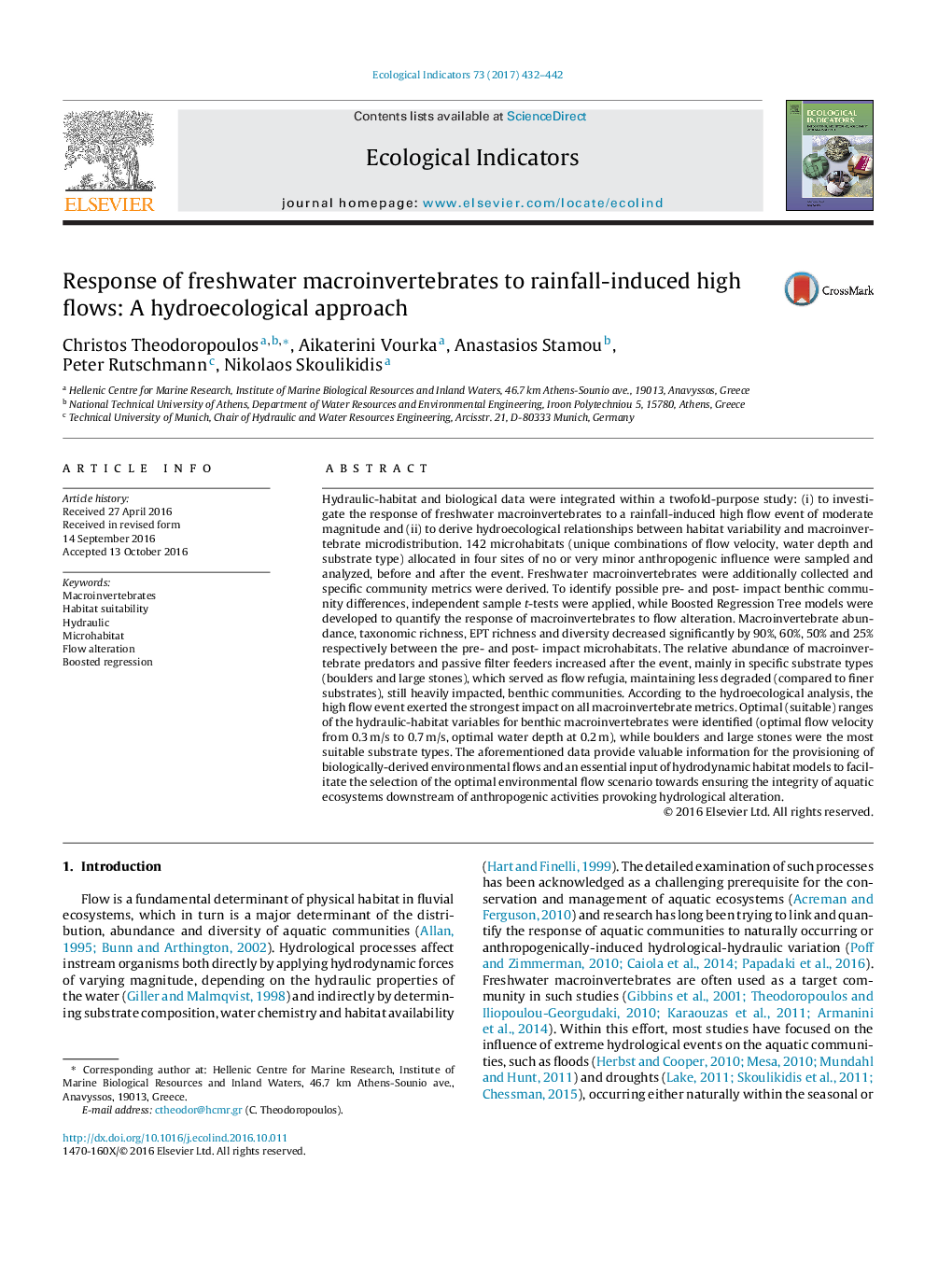| Article ID | Journal | Published Year | Pages | File Type |
|---|---|---|---|---|
| 6292614 | Ecological Indicators | 2017 | 11 Pages |
Abstract
Hydraulic-habitat and biological data were integrated within a twofold-purpose study: (i) to investigate the response of freshwater macroinvertebrates to a rainfall-induced high flow event of moderate magnitude and (ii) to derive hydroecological relationships between habitat variability and macroinvertebrate microdistribution. 142 microhabitats (unique combinations of flow velocity, water depth and substrate type) allocated in four sites of no or very minor anthropogenic influence were sampled and analyzed, before and after the event. Freshwater macroinvertebrates were additionally collected and specific community metrics were derived. To identify possible pre- and post- impact benthic community differences, independent sample t-tests were applied, while Boosted Regression Tree models were developed to quantify the response of macroinvertebrates to flow alteration. Macroinvertebrate abundance, taxonomic richness, EPT richness and diversity decreased significantly by 90%, 60%, 50% and 25% respectively between the pre- and post- impact microhabitats. The relative abundance of macroinvertebrate predators and passive filter feeders increased after the event, mainly in specific substrate types (boulders and large stones), which served as flow refugia, maintaining less degraded (compared to finer substrates), still heavily impacted, benthic communities. According to the hydroecological analysis, the high flow event exerted the strongest impact on all macroinvertebrate metrics. Optimal (suitable) ranges of the hydraulic-habitat variables for benthic macroinvertebrates were identified (optimal flow velocity from 0.3Â m/s to 0.7Â m/s, optimal water depth at 0.2Â m), while boulders and large stones were the most suitable substrate types. The aforementioned data provide valuable information for the provisioning of biologically-derived environmental flows and an essential input of hydrodynamic habitat models to facilitate the selection of the optimal environmental flow scenario towards ensuring the integrity of aquatic ecosystems downstream of anthropogenic activities provoking hydrological alteration.
Keywords
Related Topics
Life Sciences
Agricultural and Biological Sciences
Ecology, Evolution, Behavior and Systematics
Authors
Christos Theodoropoulos, Aikaterini Vourka, Anastasios Stamou, Peter Rutschmann, Nikolaos Skoulikidis,
